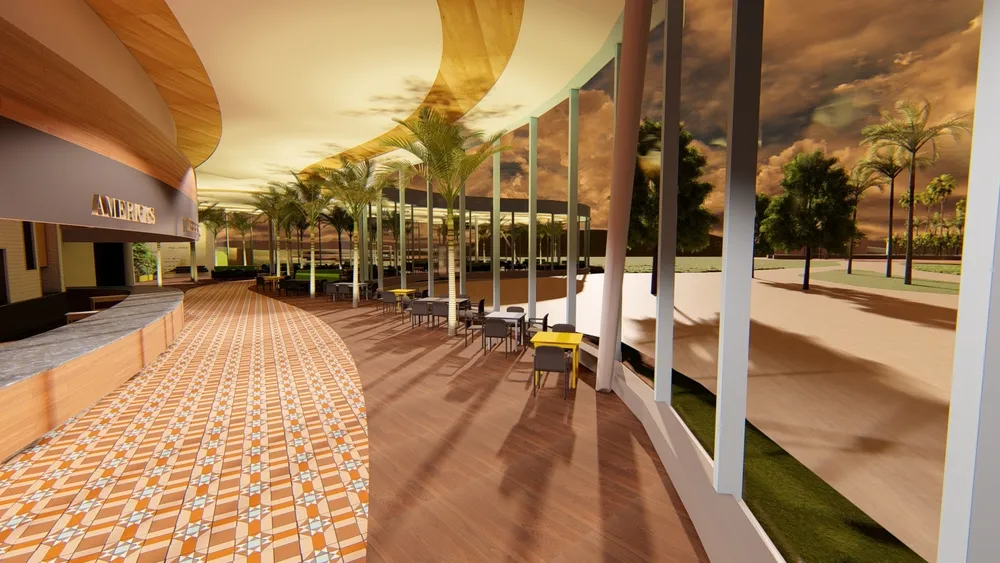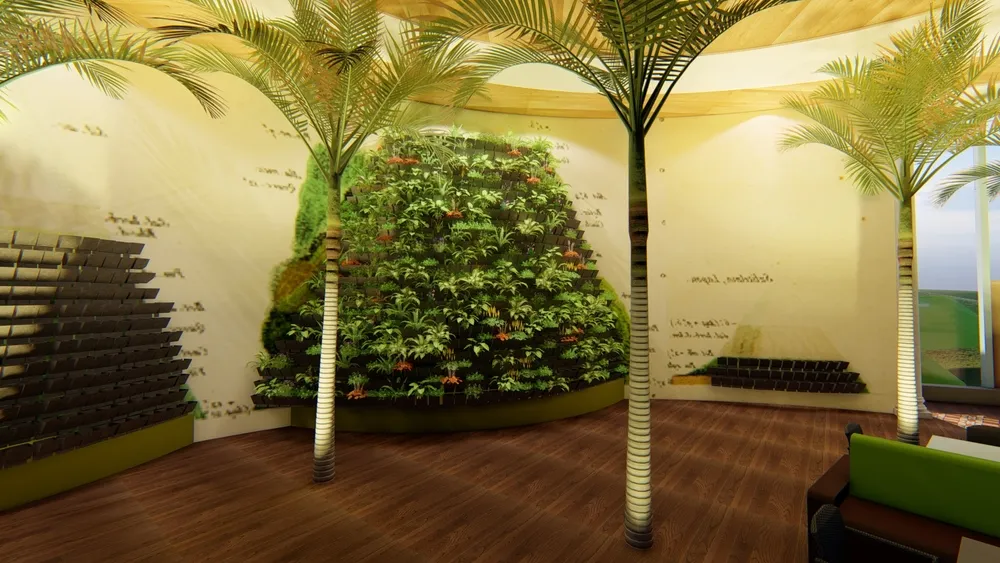Vertical Greenwall Restaurant Humbodlt
The Therme Group is a world leader in providing wellness and spa experiences. The company operates over 20 thermal bath complexes across Europe and Asia, offering a range of thermal pools, saunas, massages, and other treatments. In recent years, the company has been focusing on sustainability and eco-friendliness, with a particular emphasis on indoor greenery. One of their most exciting projects is the living indoor green wall, which was developed based on the explorer Humboldt.

The Humboldt Restaurant, located within the Therme Bucharest complex, is a stunning example of the company's commitment to sustainability and greenery. The restaurant's focal point is a lush vertical garden, which covers an entire wall and extends up to the ceiling. The greenery is not only beautiful to look at but also serves an important function in improving the air quality and creating a healthy ambiance in the space.
The living indoor green wall was developed using Therme's special vertical green wall system, which includes a mineral substrate that provides the plants with the necessary nutrients to grow. The system also uses a drip irrigation system that ensures the plants receive the right amount of water and nutrients at all times. This approach ensures that the greenery stays healthy and vibrant, even in an indoor environment.

The design of the green wall was inspired by the famous explorer Alexander von Humboldt, who was one of the first people to document the link between plant life and climate. Humboldt's explorations of the Amazon and other regions of South America in the late 18th and early 19th centuries were instrumental in developing our understanding of the natural world and the impact of human activity on it.
The green wall at the Humboldt Restaurant serves as a tribute to Humboldt's legacy and his emphasis on the importance of plants and greenery for a healthy planet. The wall features a wide range of plants, including ferns, bromeliads, and other species that are native to tropical regions of the world. The greenery is not only beautiful but also creates a natural air conditioning effect, which helps regulate the temperature and humidity in the space.
In addition to the living indoor green wall, the Humboldt Restaurant also features a range of other sustainable design features. The furniture and decor were made using eco-friendly materials, and the lighting system uses energy-efficient LED lights. The restaurant also serves a range of organic and locally sourced food, which further emphasizes Therme's commitment to sustainability and eco-friendliness.

One of the most significant benefits of the living indoor green wall is its ability to improve air quality in indoor environments. Indoor air pollution is a significant problem in many parts of the world, and it can lead to a range of health issues, including respiratory problems, allergies, and headaches. The plants in the green wall act as natural air purifiers, removing harmful pollutants and toxins from the air and replacing them with fresh oxygen.
Research has shown that plants can also have a positive impact on mental health and wellbeing. Exposure to greenery has been linked to reduced stress levels, improved mood, and increased productivity. The living indoor green wall at the Humboldt Restaurant creates a soothing and calming environment that helps visitors relax and unwind.

Another benefit of the living indoor green wall is its ability to create a healthy ambiance in indoor environments. The greenery adds a natural and organic element to the space, which can be especially important in urban environments where people are often disconnected from nature. The plants also create a sense of tranquility and serenity, which can be particularly beneficial in high-stress environments such as offices and hospitals.
The living indoor green wall is just one example of Therme's commitment to sustainability and eco-friendliness. The company is also exploring other ways to incorporate greenery into its complexes, including rooftop gardens, green roofs, and other innovative design features. By prioritizing

View

View

View

View

View

View

View

View

View

View

View

View

View

View

View

View

View
